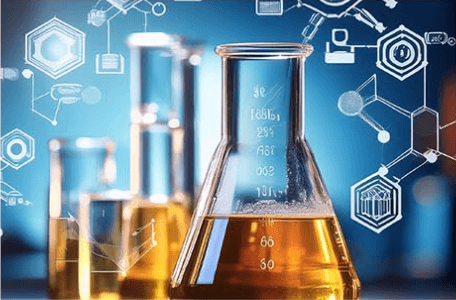Eco-Friendly Cleaning Processes: A Sustainable Approach for Industrial Parts Cleaning
The shift to eco-friendly cleaning processes is no longer optional; it’s an essential aspect of responsible and sustainable business operations. By adopting these solutions, industries can achieve regulatory compliance, protect worker health, and significantly reduce their environmental footprint. As experienced chemical consultants specializing in eco-cleaning, we help clients navigate this transition with custom-designed, sustainable solutions tailored to their specific operational needs. Embracing eco-friendly cleaning is not just a regulatory requirement; it’s a commitment to future-focused practices that benefit industries, communities, and our planet.
As a chemical consultant specializing in eco-friendly and sustainable cleaning solutions, we understand the importance of moving away from hazardous traditional chemicals and adopting greener alternatives. Today’s stringent environmental regulations, including OSHA, EPA, and NTA standards, require companies to operate in ways that minimize ecological harm and ensure worker safety. Although many industries have traditionally relied on high-pH caustics, strong acids, and other aggressive solvents for cleaning parts and surfaces, advancements in green chemistry and sustainable practices offer effective and safer alternatives. Here, we explore the critical components, methodologies, and benefits of eco-friendly cleaning processes and their relevance across industries such as automotive, electronics, electrical, and component manufacturing.
1. The Importance of Eco-Friendly Cleaning in Industries
Industries across the board utilize cleaning and degreasing processes to prepare parts for further processing, such as coating, machining, or assembly. Historically, conventional cleaning relied on caustics (such as sodium hydroxide), acids (like hydrochloric acid), and chlorinated solvents that, while effective, pose risks to the environment, operators, and downstream processes. These chemicals contribute to hazardous waste generation and require significant post-treatment and disposal costs.
Eco-friendly cleaning processes align with sustainable and green chemistry principles, providing safe, effective, and regulatory-compliant solutions for industrial parts cleaning. By reducing or eliminating hazardous chemicals, these processes protect both human health and the environment, supporting a more sustainable approach to industrial operations.
2. Eco-Friendly Cleaning Technologies:
Eco-cleaning technologies employ safer, less hazardous chemicals and alternative methodologies to achieve effective cleaning without compromising the environment or operator safety. Some of the key aspects of eco-friendly cleaning processes include:
Bio-based and biodegradable solvents: Derived from renewable resources, bio-based solvents offer effective cleaning with low toxicity and reduced environmental impact. They break down more easily post-use, minimizing waste treatment requirements.
Aqueous-based cleaners: These are water-based formulations that often include surfactants, chelating agents, and corrosion inhibitors to efficiently remove oils, greases, and contaminants without the need for harsh acids or caustics.
pH-neutral and mildly alkaline cleaners: Mildly alkaline solutions reduce the risks associated with caustic substances while maintaining effective cleaning for many types of parts and surfaces.
Non-toxic corrosion inhibitors: Preventing flash rusting or corrosion on cleaned parts is essential, particularly for ferrous materials. Non-toxic inhibitors provide effective protection without introducing additional hazards.
Low-VOC and VOC-free cleaners: By minimizing volatile organic compounds, these cleaners help industries reduce air pollution and comply with EPA regulations on VOC emissions.
Low-VOC and VOC-free cleaners: By minimizing volatile organic compounds, these cleaners help industries reduce air pollution and comply with EPA regulations on VOC emissions.
3. Designing Eco-Friendly Cleaning Processes
Designing a sustainable and eco-friendly cleaning process requires in-depth knowledge of both the materials involved and the type of contaminants that need removal. Each part may have unique metallurgical characteristics, necessitating a tailored approach to ensure compatibility and effectiveness.
Key Design Considerations:
Material Compatibility: The chemical agents selected must not adversely affect the part’s metallurgy. Testing the chemical compatibility with substrates such as aluminum, steel, or specific alloys ensures the integrity of the part remains intact.
Contaminant Profile: Different contaminants—such as oil, grease, particulate matter, and oxidation layers—require distinct cleaning methodologies. Eco-friendly solutions can be tailored to target specific contaminants with minimal environmental impact.
Process Efficiency: Eco-cleaning processes are designed for efficiency, allowing for shorter cleaning times and lower chemical concentrations while achieving optimal results.
Minimized Waste Generation: Eco-processes generate less hazardous waste and are often easier to recycle or dispose of, reducing post-cleaning treatment and disposal costs.
Customization for Specific Industry Needs:
As each industry has unique requirements, we ensure that cleaning processes are optimized for the specific operational needs and regulatory constraints of our clients. This includes advising on formulations and delivery methods (such as spray, immersion, or ultrasonic cleaning) that best suit the part design and contaminant load.
4. Benefits of Adopting Eco-Friendly Cleaning Processes
By implementing eco-friendly cleaning processes, companies gain significant advantages that extend beyond regulatory compliance to encompass cost savings, operational safety, and environmental responsibility. Here’s a closer look at the key benefits:
4.1 Environmental and Regulatory Compliance
OSHA Compliance: Eco-friendly chemicals reduce occupational hazards, minimizing risks such as skin burns, respiratory issues, and toxic exposure.
EPA Compliance: Low-VOC and biodegradable cleaners reduce emissions and environmental contamination, meeting stringent EPA regulations for chemical use and disposal.
4.2 Health and Safety of Operators
Traditional cleaning chemicals often require extensive safety measures, including personal protective equipment (PPE) and strict handling protocols. Eco-friendly alternatives, being less hazardous, reduce these requirements and improve the safety and comfort of the workplace.
Reduced Exposure Risks: Bio-based, low-toxicity cleaners reduce risks associated with inhalation, skin contact, and accidental ingestion.
Improved Air Quality: Low-VOC products contribute to better indoor air quality, reducing occupational illnesses related to chemical exposure.
Improved Sustainability: By switching to eco-cleaners, companies reduce their carbon footprint, energy usage, and reliance on finite resources, promoting a circular economy and sustainable growth.
4.3 Lower Waste Disposal Costs and Reduced Environmental Footprint
The hazardous waste generated from traditional cleaning processes requires costly disposal, while eco-friendly alternatives often minimize waste and simplify disposal needs.
Waste Reduction: Eco-cleaners generate less toxic waste, reducing treatment costs and easing the regulatory burden.
Recyclable Solutions: Many aqueous-based and bio-degradable cleaners allow for recycling within the process, further minimizing disposal needs and reducing environmental impact.
Improved Sustainability: By switching to eco-cleaners, companies reduce their carbon footprint, energy usage, and reliance on finite resources, promoting a circular economy and sustainable growth.
4.4 Process Efficiency and Cost Savings
Eco-cleaning processes are designed for high efficiency, helping companies optimize cleaning times, chemical usage, and operational costs.
Lower Chemical Concentrations: Many eco-cleaners operate effectively at lower concentrations, reducing material costs.
Efficient Cleaning Cycles: Optimized formulations allow for shorter cleaning times, increasing throughput and reducing energy use.
Extended Equipment Life: Less corrosive and abrasive cleaning agents protect both the parts and cleaning equipment, resulting in reduced maintenance and extended equipment life.
5. Eco-Friendly Cleaning Process and EHS (Environmental, Health, and Safety) Management
In line with modern EHS standards, eco-friendly cleaning processes are integral to sustainable business practices. By minimizing hazardous chemical exposure and waste generation, these processes promote responsible environmental stewardship and workplace safety.
EHS Benefits:
Minimized Hazardous Material Storage: Eco-friendly chemicals often have reduced storage requirements, reducing the need for costly containment measures and spill control.
Enhanced Worker Well-Being: Reduced chemical hazards contribute to a safer work environment, boosting worker morale and reducing turnover.
Positive Community Impact: Companies adopting eco-friendly processes foster a positive community reputation, aligning with sustainability values that resonate with today’s socially-conscious consumers.
6. Technological Advancements and Innovation in Eco-Cleaning
New technological advancements are continually driving the eco-cleaning field forward. The integration of innovations like nanotechnology and enzyme-based cleaners offers unparalleled cleaning efficiency and substrate protection. Additionally, advanced delivery systems—such as ultrasonic and vapor cleaning—enhance the effectiveness of eco-friendly chemicals, making them a viable alternative to traditional harsh chemicals.



